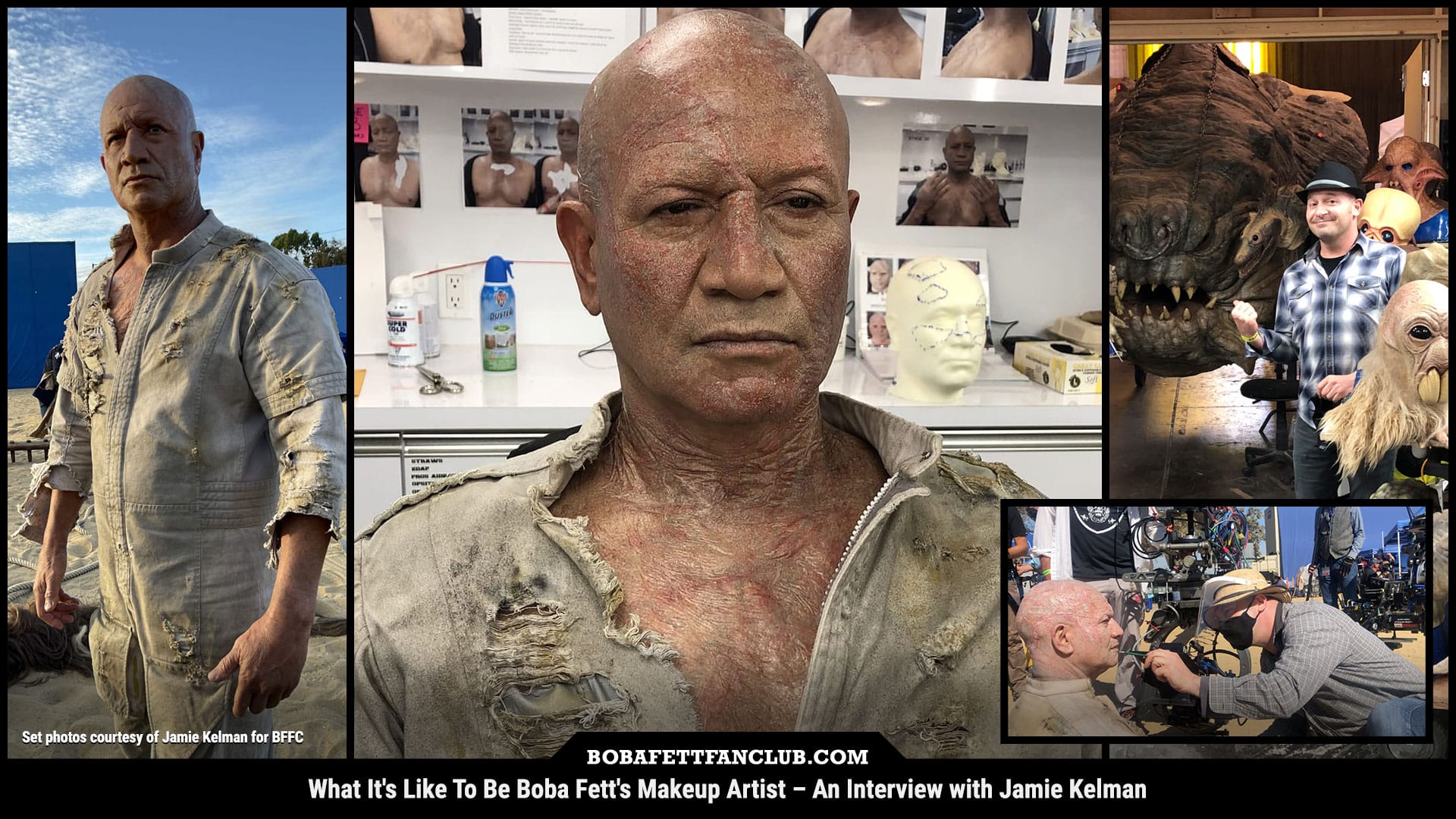
What It's Like To Be Boba Fett's Makeup Artist
We spoke with Jamie Kelman, an Emmy Award-winning makeup and special makeup effects artist, about his experiences doing Temuera Morrison’s Boba Fett makeup for “The Mandalorian” and “The Book of Boba Fett.”
Being in the belly of a Sarlacc isn’t great for the skin, so being a makeup artist responsible for actor Temuera Morrison’s transformation into “Post-Sarlacc” Boba Fett was more complicated than just applying some foundation and calling it a day. Emmy Award-winning makeup and special makeup effects artist Jamie Kelman took on that important task for “The Book of Boba Fett.” Kelman told us what it was like to spend time with Morrison in the makeup chair every morning, plus helping design and sculpt the makeup for a species of aliens, and seeing iconic characters and vehicles at work every day.
Just like “The Book of Boba Fett,” we have to go back in time to Kelman’s childhood to get the full story.
Kelman was almost four when “A New Hope” was released in 1977, and counts seeing the film as one of his “earliest movie memories.” Like many kids who grew up around that time, the three Star Wars films were a huge part of his life.
Among all of the toys and bed sheets in his Star Wars collection was a 1980 book that may have sparked his interest in makeup and special effects called “Star Wars: The Making of the Movie” by Larry Weinberg.
“It was about the special effects, but for a child,” he said. “And this is like a peek behind the curtain.”
He still has the book, although it’s looking a little worse for wear these days.
It also helps that the 80s were a boom time for Hollywood practical and makeup effects, with magazines like Fangoria, Cinefantastique and Cinefex showing off the work of big players like Dick Smith (“The Exorcist”), Rick Baker (the cantina aliens in “A New Hope”) and Rob Bottin (“The Thing”) serving as inspiration.
“I guess some other kids would have baseball players on baseball cards or something. And I was into these guys,” Kelman said.
In high school, Kelman took a correspondence course with the legendary Smith, and at 16, worked on stop motion animation for the TV series “Monsters” under John Dods (“The Deadly Spawn”) at Laurel Entertainment, the production studio of George Romero (“Night of the Living Dead”).
After graduating from New York University’s Tisch School of the Arts film school, Kelman headed to Los Angeles in 1995.
Kelman’s film and TV credits since then are numerous, but he got his first opportunity to work in the Star Wars universe as a makeup artist on “The Mandalorian” Season 2. Kelman had been working on various projects in the famed Creature Shop when Brian Sipe, the Lead Makeup Designer and Makeup Department head for the first two seasons of “The Mandalorian” and “The Book of Boba Fett,” asked him for his help on a project.
“He asked me to assist him with a makeup that he had done, and I show up, and there’s Temuera Morrison, and it’s the big Boba Fett reveal,” Kelman said.
Sipe and key makeup artist/co-makeup designer Alexei Dmitriew designed the Fett makeup for his first Mandalorian appearance, but Kelman was tagged in when Dmitriew was drawn away to do Mark Hamill’s Luke Skywalker makeup. Kelman’s work appears in the “close up shots of [Fett] and him bashing the stormtroopers’ heads” on Tython.
As “The Mandalorian” Season 2 headed into post-production, Hollywood and the whole world shut down during the first COVID-19 lockdown in March 2020. Behind the scenes, Sipe was looking for someone to design makeup for the dog-like Klatoonian species that was originally designed by Dave Carson for “Return of the Jedi.”
Sipe knew Kelman had worked as a makeup artist on “Planet of the Apes” (2001) under Rick Baker, the special makeup effects designer and creator for the Tim Burton-helmed reboot. Baker used an innovative method to create the characteristic “muzzle” for each ape. Each actor was fitted with special dentures that pushed out their lips, a face cast was taken, and then makeup was sculpted onto the face cast from there.
Because Kelman had experience creating those innovative muzzles, Sipe chose him to work on the Klatooinian sculpt for “The Book of Boba Fett.”
“I got to do that Planet-of-the-Apes style, pushed-out teeth… What started as my basic sculpture, which was so that we could do all the masks before they’d even cast the actor that would play the Klatooinian. This way we were able to jump forward, get work done, and then I had to reverse engineer it to fit the face of who they eventually cast, actor/stuntman Ardeshir Radpour, and we needed to turn the mask into a custom prosthetic makeup to specifically fit him, which was fascinating,” Kelman said.
While Klatooinians had appeared in Season 1 of “The Mandalorian” courtesy of Legacy FX Studio, design-wise they went off into more imaginative directions of various types of dog-alien mixtures, no longer looking like skiff guard Barada (or Kithaba) from “Return of the Jedi.” Lead Star Wars Designer Doug Chiang became involved in course-correcting and re-re-creating them, working directly with Brian Sipe and Kelman so that they were once again recognizable as the characters seen in the Original Trilogy. As Kelman sculpted the new Klatooinian remotely during COVID from his home studio, Chiang and Sipe provided feedback and notes which were incorporated into the final sculpture.
His sculpt was used to create prosthetics and masks for a large number of Klatooinians, including the Don of the Klatooinian family in Mos Espa and Kaba Baiz, the head of the meat packing plant on the Glavis Ringworld.
“To create a species of aliens for me, as a monster maker and an alien creature creator, I couldn’t have asked for something more special,” Kelman said. “I mean, now you go to StarWars.com and type in ‘Klatooinian‘ and my makeup is the picture that shows up. That’s cool!”
Work continued on for Kelman and the rest of the Creature Shop building many of the amazing non-human characters in “The Book of Boba Fett,” including the aliens at Garsa Fwip’s Sanctuary, a full-size rancor head, neck and back mounted to a flight simulator, and the giant mechanical sand beast, just to name a few. Strict COVID-19 protocols meant that Sipe and Dmitriew were unavailable to do Morrison’s Boba Fett makeup maintenance on-set for filming each day, as they needed to oversee the Creature Shop and not be stuck on-set far from the build of aliens with tight deadlines to meet.
“So Brian Sipe spearheaded the build of those scars, and he and I sat down and he said to me, ‘I’m going to be overseeing the shop. You’re going to be the guy on set every day doing Boba Fett’s makeup. Is that cool?’ And I said, ‘Yeah, that’s cool,'” Kelman said with a laugh.
Every morning, Brian Sipe and Jamie Kelman would double-team the application of Boba Fett’s makeup. Once the daily Boba Fett makeup was applied, Brian Sipe would go back to the Creature Shop, overseeing designs and builds for all the other new aliens we were creating from the Manhattan Beach Studio on-site alien workshop.
Kelman would go to set with Temuera Morrison for filming all the scenes. As Boba Fett’s makeup artist, Kelman would keep the makeup looking good all day in front of the cameras with lots of maintenance required from all the action and sweating that happens, especially when the iconic helmet would go on and off of his head which did plenty of rubbing and scraping off the makeup, and Kelman would make any quick changes as might be needed as per the scripts and story, whether it be applying sweat to enhance a fight, or applying Sarlacc goop as Boba Fett quested into that pit in his search, or putting sand on his face when Sandpeople had dragged Boba as a prisoner, or taking sand off his face and out of his eyes — whatever the needs of the script and story called for.
Kelman became Boba Fett’s makeup artist for ten months over the filming of “The Book of Boba Fett.” Continuity was a big deal when it came to the placement and severity of Fett’s Sarlacc scars, so the team came up with eight stages of looks starting with his “The Mandalorian” Season 2 look. Kelman is grateful to Brian Sipe for sharing this part of the design creation of the make-up for Boba Fett. Sipe and Kelman figured the eight looks out, both technically and artistically, testing makeup looks and getting feedback from the show’s creators (Favreau, Filoni, and Rodriguez), mapping and charting the stages of transition, severe burns to healed and and handsome, in the transformation of Boba Fett’s look over the course of all the episodes.
Going backward, stages one and two required the designers to imagine what Fett would look like right out of the Sarlacc and after being held captive by the Tusken tribe.
“Jon Favreau had an idea in his mind that he wanted the look to be kind of like Keanu Reeves in ‘The Matrix’ when he was first birthed from his pod, like, alabaster, pale and slimy,” Kelman said.
Favreau didn’t want the scarring to “look like Freddy Krueger,” though, so they had to be innovative and careful not to go too far. They used materials called Opsite tape and Pros-Aide acrylic adhesive to create a multilayered look that was “still fast enough to do on a daily basis so that Tem could get to work and not be stuck in the makeup chair for too many hours,” Kelman explained.
Kelman said Morrison had a “warrior mindset” when it came to getting through the makeup process.
“It’s uncomfortable, it’s really early. Maybe it’s cold. And now I’m going to put something wet on you that’s also cold, that’s glue. And now you’re going to be sticky… And he never complained about all this stuff that we did to his face and body,” Kelman said.
When Morrison needed a boost on set, Kelman said he drew from his Maori culture.
“When he’s low energy, he would start stamping his foot or hitting his hand and doing a Maori chant. And he actually says that’s how he draws energy out of the Earth and into himself,” Kelman said. “Temuera Morrison is the coolest, coolest guy. I love that guy.”
It’s been a few years since “The Book of Boba Fett” wrapped and Kelman has worked on a number of projects since then, including “Oppenheimer” and “Rebel Moon,” but he still looks back at his time in a galaxy far, far away fondly.
“To get to go to Star Wars land, to get to work on Tatooine every day in the Mos Espa set with actual buildings built and these vehicles and land speeders… For a Star Wars kid like me, who was three when Star Wars initially came out, to now be filming in Jabba the Hutt’s palace… I’m very grateful it happened.”
More from This Author
 Exclusive Interview with Ethan Sacks, Author of “Star Wars: Boba Fett – Black, White & Red #3”
Exclusive Interview with Ethan Sacks, Author of “Star Wars: Boba Fett – Black, White & Red #3”
 Exclusive Interview with Saladin Ahmed, Author of “Star Wars: Boba Fett – Black, White & Red #2”
Exclusive Interview with Saladin Ahmed, Author of “Star Wars: Boba Fett – Black, White & Red #2”
 Exclusive Interview with Benjamin Percy, Author of “Star Wars: Boba Fett – Black, White & Red #1”
Exclusive Interview with Benjamin Percy, Author of “Star Wars: Boba Fett – Black, White & Red #1”
 Everything Boba Fett From Toy Fair New York 2025
Everything Boba Fett From Toy Fair New York 2025
 NYCC 2024: Lucasfilm Publishing Panel Liveblog
NYCC 2024: Lucasfilm Publishing Panel Liveblog

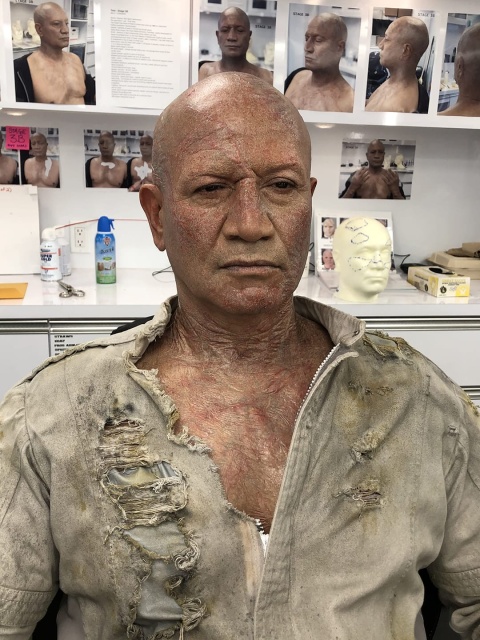
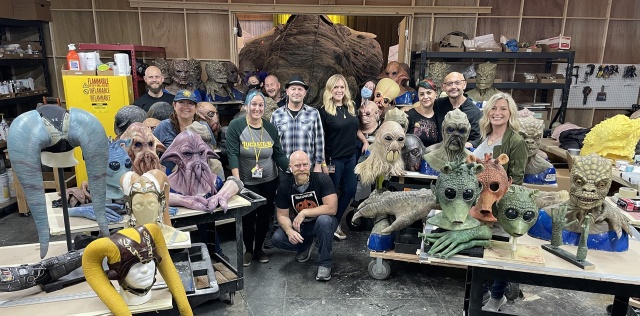
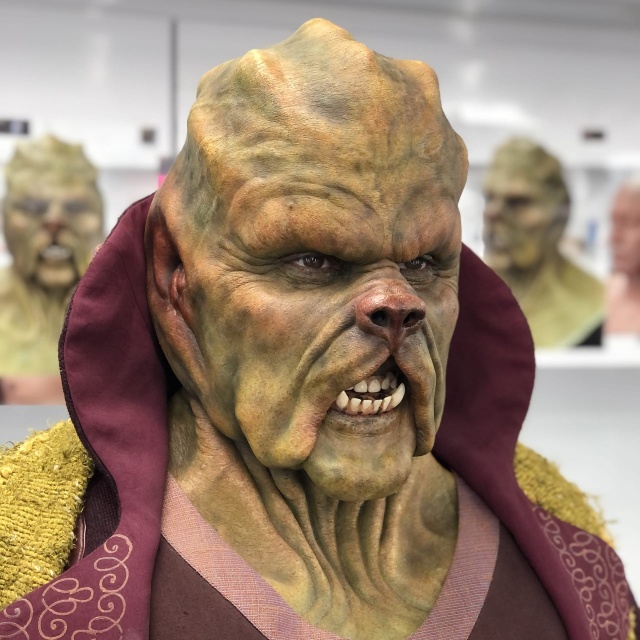
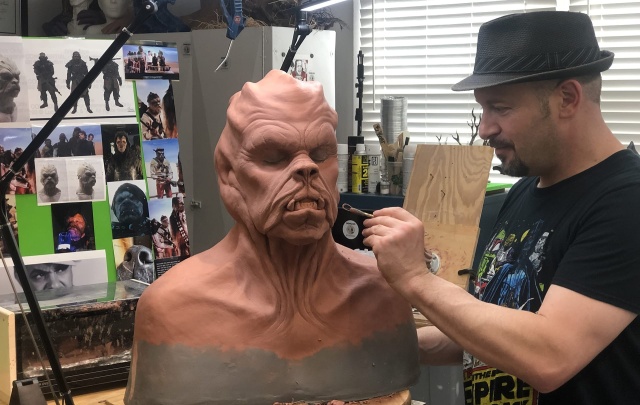
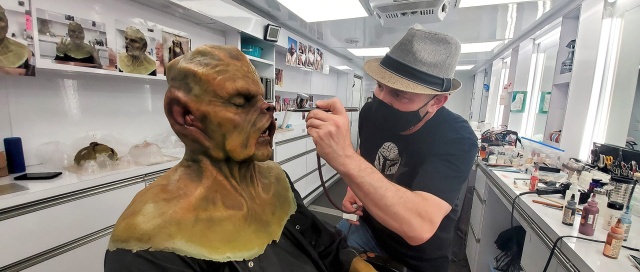
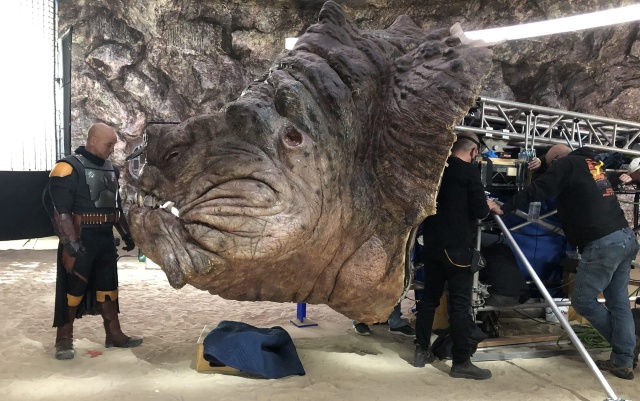
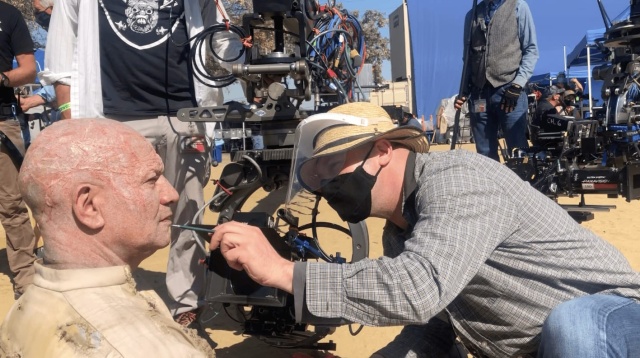
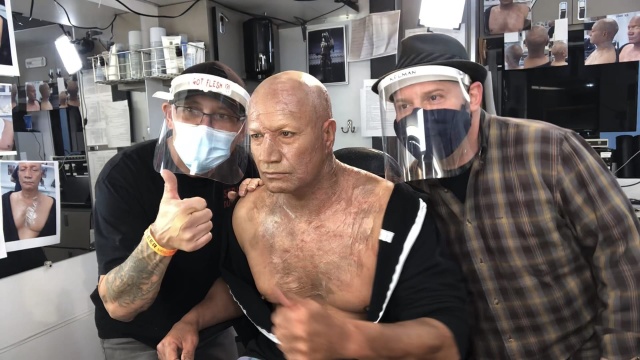
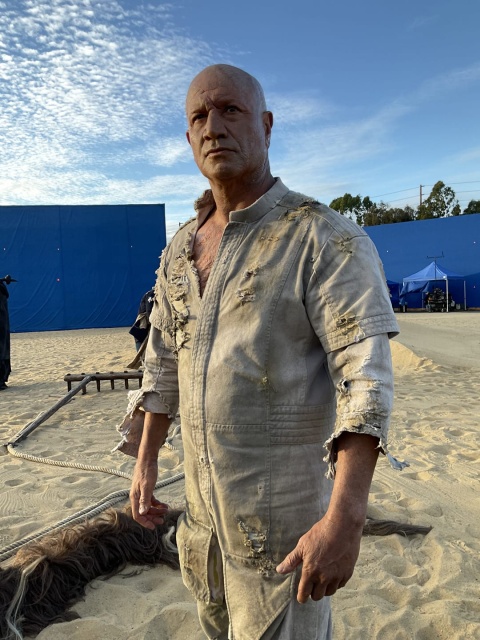







Comments